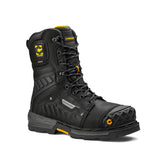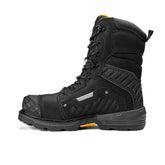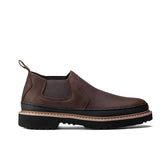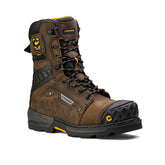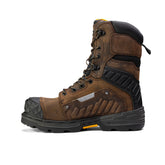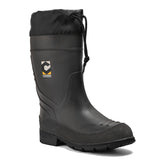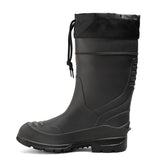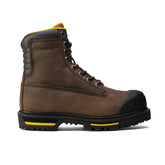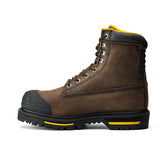Top Signs Your Work Boots Need To Be Replaced
Your work boots are an essential tool that protect your feet from hazards, provide support for long hours, and keep you comfortable on the job. But like all gear, they don’t last forever. Worn-out boots can compromise safety and cause discomfort, so knowing when to replace them is crucial.
When to Replace your Work Boots?
Here are three key signs your work boots have reached the end of the road and should be replaced.
- Visible Damage and Wear
- Discomfort and Decreased Support
- Compromised Safety Features
Visible Damage and Wear
Your boots endure a lot of stress, from constant movement to exposure to harsh environments. Over time, this wear and tear becomes evident. Here’s what to look for:
- Sole Separation or Excessive Tread Wear - The outsoles provide traction and stability, helping you stay safe on different surfaces. If the soles are peeling away or the tread pattern is worn smooth, your risk of slipping and falling increases significantly.
- Cracks or Holes in the Upper – Leather and synthetic materials naturally degrade with use, forming weak spots that allow water, dirt, or chemicals to seep in. If your boots are no longer shielding your feet from external elements, it’s time for a replacement.
- Damaged Toe Caps – If you wear steel or composite toe boots, any dents, cracks, or warping in the protective shell mean it can no longer safeguard your feet from impacts and compression hazards.
Discomfort and Decreased Support
Even if your boots look fine on the outside, their internal structure can wear down over time, leading to discomfort and inadequate support.
- Foot Pain or Fatigue – If your feet feel more sore than usual at the end of the day, your boots may no longer provide the cushioning and arch support needed for prolonged wear.
- Loose or Misshapen Fit – Over time, materials stretch and lose their original shape, causing your boots to fit improperly. A poor fit can lead to blisters, instability, and foot strain.
- Reduced Shock Absorption – Midsoles are designed to absorb impact and reduce strain on your joints. If your boots feel flat and offer little cushioning, the midsole has likely compressed beyond its useful life.
Compromised Safety Features
Work boots are built to protect you, but once their safety features start to fail, they put you at risk.
- Worn-Out Waterproofing – If water is seeping in more than it used to, the waterproof membrane has likely deteriorated. Wet feet can lead to discomfort, blisters, and even long-term foot health issues.
- Deteriorated Slip-Resistance – Outsoles are designed to grip surfaces and prevent slips, especially in hazardous work environments. If you find yourself slipping more often on wet or oily surfaces, it’s a sign that the outsole has lost its effectiveness.
- Frayed Laces or Eyelets – While they may seem like minor issues, damaged laces and eyelets can lead to an improper fit, increasing the risk of instability and potential injury.
How Long Do Work Boots Last?
The lifespan of work boots depends on various factors, including frequency of use, work environment, and material quality. As a general guideline:
- Light Use (occasional wear, desk jobs with minimal walking): 1-2 years
- Moderate to Heavy Use (construction, warehouse, manufacturing, extreme conditions): 6-12 months
Regular maintenance, such as cleaning and conditioning leather, replacing insoles, and reapplying waterproof treatments, can extend your boots’ lifespan. However, if you notice multiple signs of wear, it’s best to invest in a new pair before safety and comfort are compromised.
Invest in Quality With Chinook Footwear
Your work boots should work as hard as you do. At Chinook Footwear, we design durable, high-performance boots built to withstand demanding conditions. If it’s time for a new pair, explore our collection and step into reliable protection and comfort.

